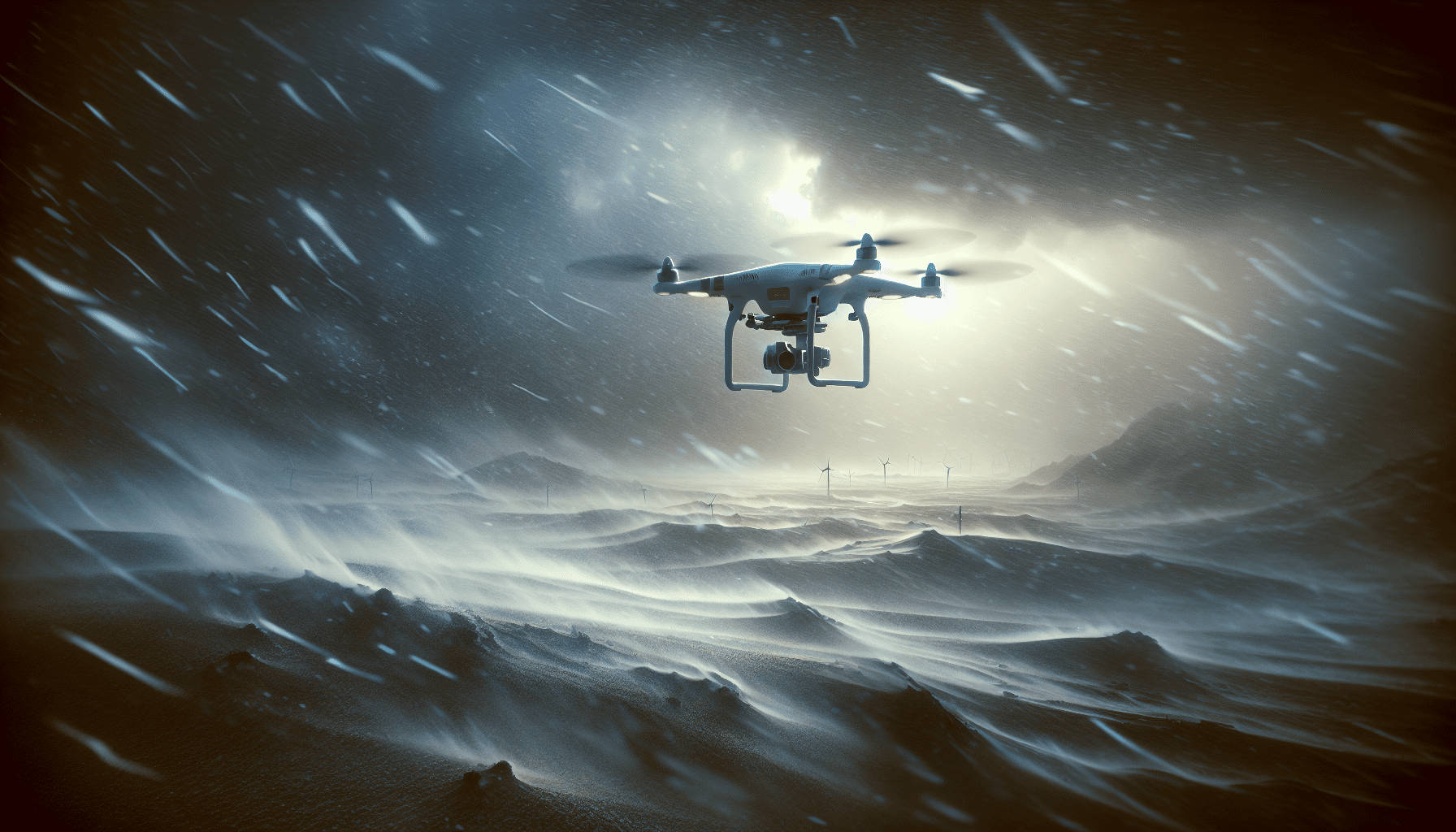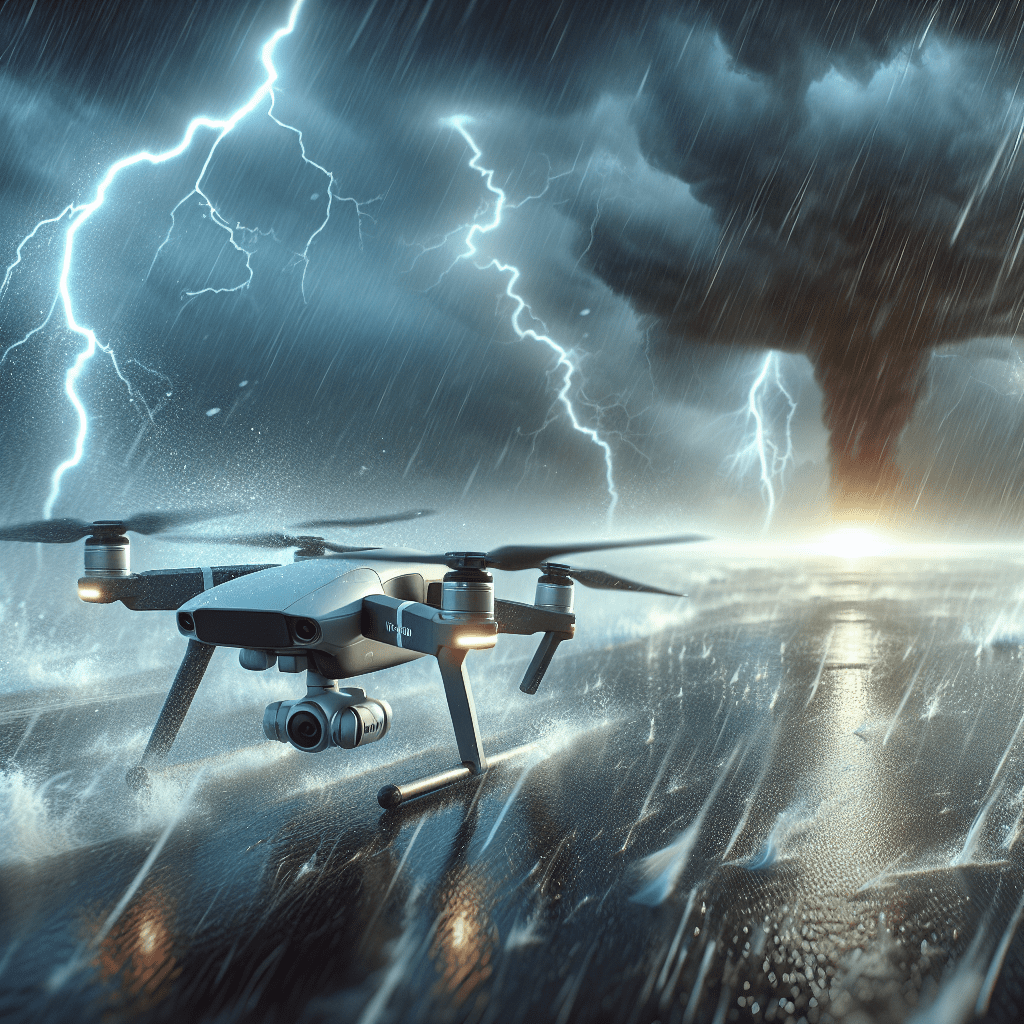Understanding Drone Weather Adaptation
Drone weather adaptation refers to the various strategies and technologies employed to enable UAVs (Unmanned Aerial Vehicles) to function effectively in diverse environmental conditions. Atmospheric elements such as wind, rain, snow, and extreme temperatures significantly influence the performance and safety of drone flights. For instance, high winds can cause instability in flight, rendering it difficult for drones to maintain control and precision. Rain can jeopardise electronic components and sensors, while snow and ice accumulation may impact both aerodynamics and battery performance. Understanding how weather conditions affect drone functionality is not just a matter of best practices—it’s essential for safe operation and regulatory compliance.

The Role of Wind in Drone Operations
Wind is perhaps the most critical weather condition affecting drone weather adaptation. Light breezes may not pose a threat, but strong gusts can force a drone to operate beyond its optimal capacity. Drones equipped with robust stabilisation features may manage moderate winds effectively, yet pilots should always check wind conditions before take-off. Learning to assess wind speed and direction enables drone operators to make informed decisions about flight times and routes. In regions known for unpredictable gusts, it is prudent to invest in drones specifically designed to handle adverse wind conditions.
Rain and Moisture: A Double-Edged Sword
Rain poses its own set of challenges for drone operators. While some drones are water-resistant, many standard models are not. Moisture can infiltrate the electronic components, potentially leading to malfunctions. Furthermore, raindrops can obstruct camera lenses and sensors, severely impacting image quality and navigational effectiveness. For missions that cannot be postponed, investing in weatherproof drones can offer a significant advantage. In the USA, for example, several manufacturers have begun producing models that can operate reliably in rainy conditions. However, operator discretion should still prevail; flying in torrential conditions is rarely advisable, regardless of a drone’s specifications.
Temperature Extremes and Battery Life
Extreme temperatures also present a unique challenge in drone weather adaptation. Cold weather can reduce battery efficiency, leading to shorter flight times. Conversely, high temperatures may cause components to overheat, risking failure. Regularly checking the battery life and considering thermal insulation for batteries can help mitigate these risks. Operators should consider regional climate conditions when planning flights, particularly for long missions. Understanding how atmospheric pressure relates to altitude can also influence the flight performance of drones in variable temperatures. By having a keen awareness of these factors, drone operators can optimise their missions.
Military Drones and Adverse Weather Conditions
Military drones represent a unique category when considering drone weather adaptation. These UAVs are often designed to withstand severe weather conditions that would typically ground civilian drones. The military invests heavily in technology to ensure that their drones can fly in rain, snow, and even extreme wind conditions. Advanced materials and protective coatings are often integrated into the design of military drones, enhancing their durability against harsh weather. Moreover, military UAVs frequently employ sophisticated navigational systems that enable them to maintain flight stability under adverse weather conditions, enabling missions to proceed as planned.
“Military drones are engineered with resilience in mind, allowing operations in conditions that would be detrimental to standard UAVs.”
Capabilities of Military Drones in Bad Weather
High-profile examples of military drone operations in challenging weather may include reconnaissance missions conducted during stormy weather or intelligence gathering in snowy terrains. The ability to fly in such conditions expands operational capabilities, allowing military forces to gather critical information without being hindered by weather. Notably, UAVs such as the MQ-9 Reaper have demonstrated flight in less-than-ideal conditions, illustrating the benefits of investing in robust engineering and technology. This capacity not only enhances strategic advantages but also serves to expedite objectives while ensuring personnel safety. Nonetheless, military operational guidelines still advocate for caution and thorough mission planning concerning weather constraints.
How Can Weather Conditions Complicate Military Missions?
Despite their superior capabilities, military drones are not entirely invulnerable to weather. Harsh storms can affect visibility, make navigation complex, and necessitate risky manoeuvres. Just as civilian operators must be mindful of weather forecasts, military personnel must adapt their strategies and be prepared to cancel or delay missions should the forecast suggest potential hazards. For instance, heavy rain could obscure visual equipment, making aerial images less actionable for tactical purposes. Moreover, extreme weather can compromise drone communications, leading to operational delays or loss of control. Adapting to these situations involves a combination of real-time weather monitoring and adaptive mission planning.
Challenges and Limitations of Drone Flight
Operating a drone in adverse weather conditions presents clear challenges, but understanding these limitations is essential for safe and effective flights. Adverse weather can affect a drone’s aerodynamics significantly, creating instability and making control more difficult. This degradation of performance may increase the risk of accidents for both the drone and surrounding people or properties. Pilots should be acutely aware of their drone’s capabilities, understanding that maximum wind speeds, temperature fluctuations, and moisture levels are critical in determining when flights should be postponed.
Regulatory Compliance and Safety Considerations
One of the primary challenges facing drone pilots is regulatory compliance. In many countries, regulations dictate the maximum altitude for drone flights—typically set at 400 feet. This limit serves a dual purpose: preventing interference with manned aircraft and ensuring public safety. Violating this altitude restriction, especially in extreme weather, can lead to potential accidents and legal ramifications. Pilots must abide by these regulations promptly. Adapting to varying conditions while remaining compliant presents an ongoing challenge, necessitating continuous education and awareness.
Impact of Visibility on UAV Operations
Poor visibility, whether due to fog, rain, or snow, poses another significant challenge for drone operators. Drones rely heavily on visual sensors and GPS for navigation. In instances of low visibility, UAVs may struggle to maintain proper course, leading to disorientation and erratic flight patterns. Such scenarios highlight the importance of weather conditions in pre-flight planning. Operators must assess not only their drones’ specifications but also the broader environmental context, ensuring their planned flight does not expose them to excessive hazards.
The Importance of Proactive Planning
Given all these factors that contribute to effective drone weather adaptation, proactive planning is paramount. Operators should evaluate weather forecasts thoroughly and remain flexible in their flight plans. Utilising tools such as reliable weather APIs can provide real-time updates, aiding in decision-making about when to fly and what routes to take. Additionally, conducting pre-flight checks and ensuring that all systems are functioning optimally is essential for safety, especially in adverse conditions. This kind of strategic planning can mean the difference between a successful mission and one fraught with complications.
Investing in Technology for Enhanced Flight Safety
The advancements in drone technology have significantly improved drone weather adaptation over the years. Features such as GPS tracking, obstacle avoidance sensors, and real-time telemetry enhance operators’ ability to navigate challenging weather conditions effectively. With features like these, many modern drones can adapt mid-flight, adjusting their altitude and route to avoid stormy weather or strong winds proactively. Consequently, selecting drones with advanced features can greatly enhance safety and operational efficiency, especially for those conducting long-range missions or flights in less predictable environments.
Community Guidelines and Best Practices
Fostering a culture of responsibility is essential for the drone community, particularly regarding weather-related adaptations. Understanding why one should avoid flying near populated areas underscores the importance of adhering to best practices. By adhering to community guidelines, drone operators not only protect themselves but also create a safer environment for everyone. Collaboration through forums and workshops can aid significantly in spreading awareness about the safety measures crucial for drone operations in various weather conditions.
Conclusion: Prioritising Safety Through Adaptation
In conclusion, mastering drone weather adaptation remains a continuous journey for any UAV operator. Understanding the impacts of wind, rain, temperature, and visibility is vital for making informed decisions while flying. By recognising the unique capabilities of military drones, the regulatory challenges faced in varying weather conditions, and the importance of proactive planning, operators can improve both their safety and efficacy. Emphasising technological investments combined with adherence to guidelines will enable drone pilots to maximise potential, even under adverse weather conditions. With careful attention to detail and a commitment to safety, effective drone operations—regardless of the weather—can indeed be achieved. Explore our range of weatherproof drones to ensure safe flying under all conditions.
Frequently Asked Questions
Can drones fly in rain or snow?
- Yes, some drones are designed to be weatherproof and can fly in rain or snow. However, it’s important to check the drone’s specifications for weather resistance and take necessary precautions.

